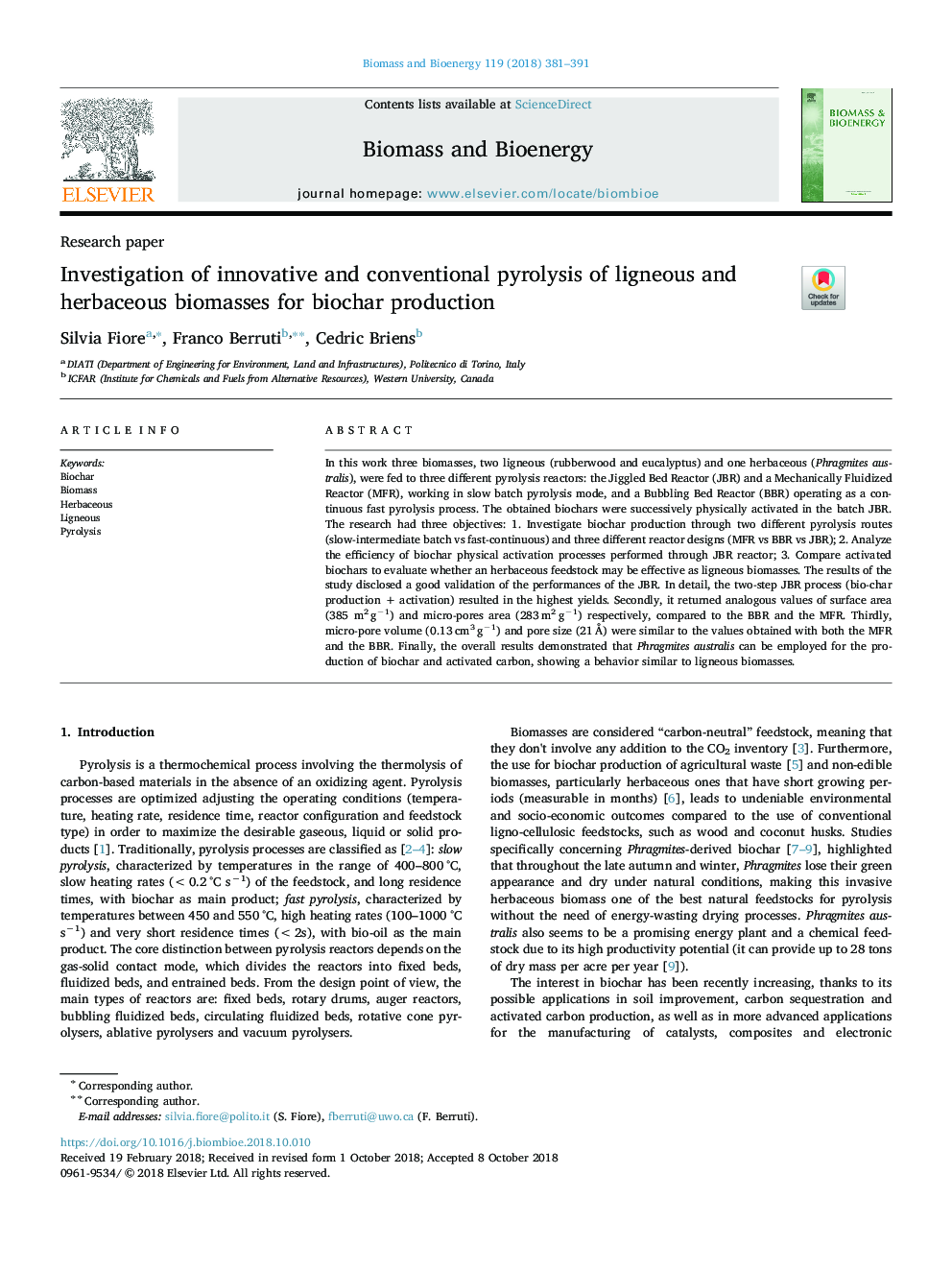| Article ID | Journal | Published Year | Pages | File Type |
|---|---|---|---|---|
| 11263676 | Biomass and Bioenergy | 2018 | 11 Pages |
Abstract
In this work three biomasses, two ligneous (rubberwood and eucalyptus) and one herbaceous (Phragmites australis), were fed to three different pyrolysis reactors: the Jiggled Bed Reactor (JBR) and a Mechanically Fluidized Reactor (MFR), working in slow batch pyrolysis mode, and a Bubbling Bed Reactor (BBR) operating as a continuous fast pyrolysis process. The obtained biochars were successively physically activated in the batch JBR. The research had three objectives: 1. Investigate biochar production through two different pyrolysis routes (slow-intermediate batch vs fast-continuous) and three different reactor designs (MFR vs BBR vs JBR); 2. Analyze the efficiency of biochar physical activation processes performed through JBR reactor; 3. Compare activated biochars to evaluate whether an herbaceous feedstock may be effective as ligneous biomasses. The results of the study disclosed a good validation of the performances of the JBR. In detail, the two-step JBR process (bio-char production + activation) resulted in the highest yields. Secondly, it returned analogous values of surface area (385 m2â¯gâ1) and micro-pores area (283â¯m2â¯gâ1) respectively, compared to the BBR and the MFR. Thirdly, micro-pore volume (0.13â¯cm3â¯gâ1) and pore size (21â¯Ã
) were similar to the values obtained with both the MFR and the BBR. Finally, the overall results demonstrated that Phragmites australis can be employed for the production of biochar and activated carbon, showing a behavior similar to ligneous biomasses.
Keywords
Related Topics
Physical Sciences and Engineering
Chemical Engineering
Process Chemistry and Technology
Authors
Silvia Fiore, Franco Berruti, Cedric Briens,
